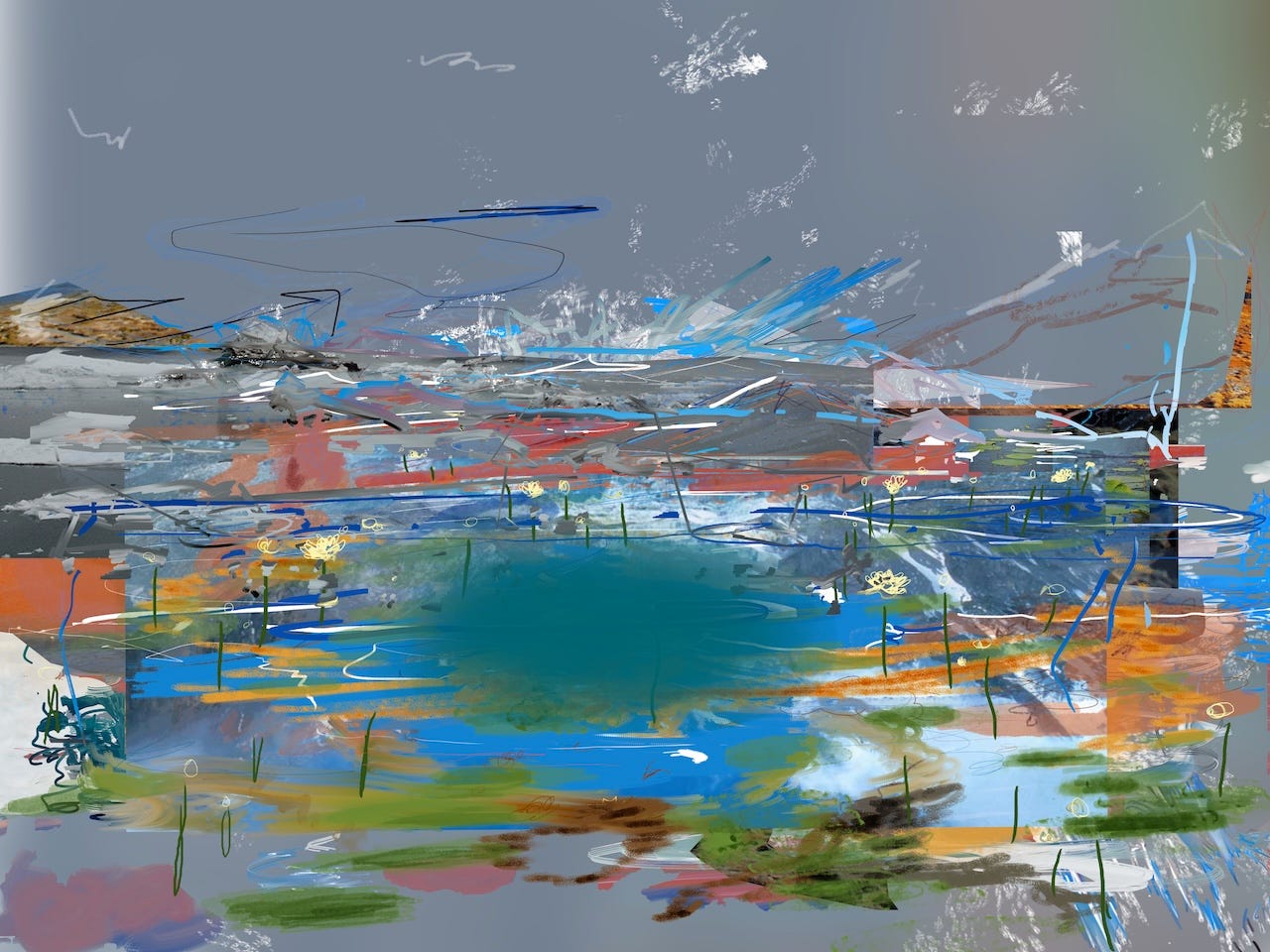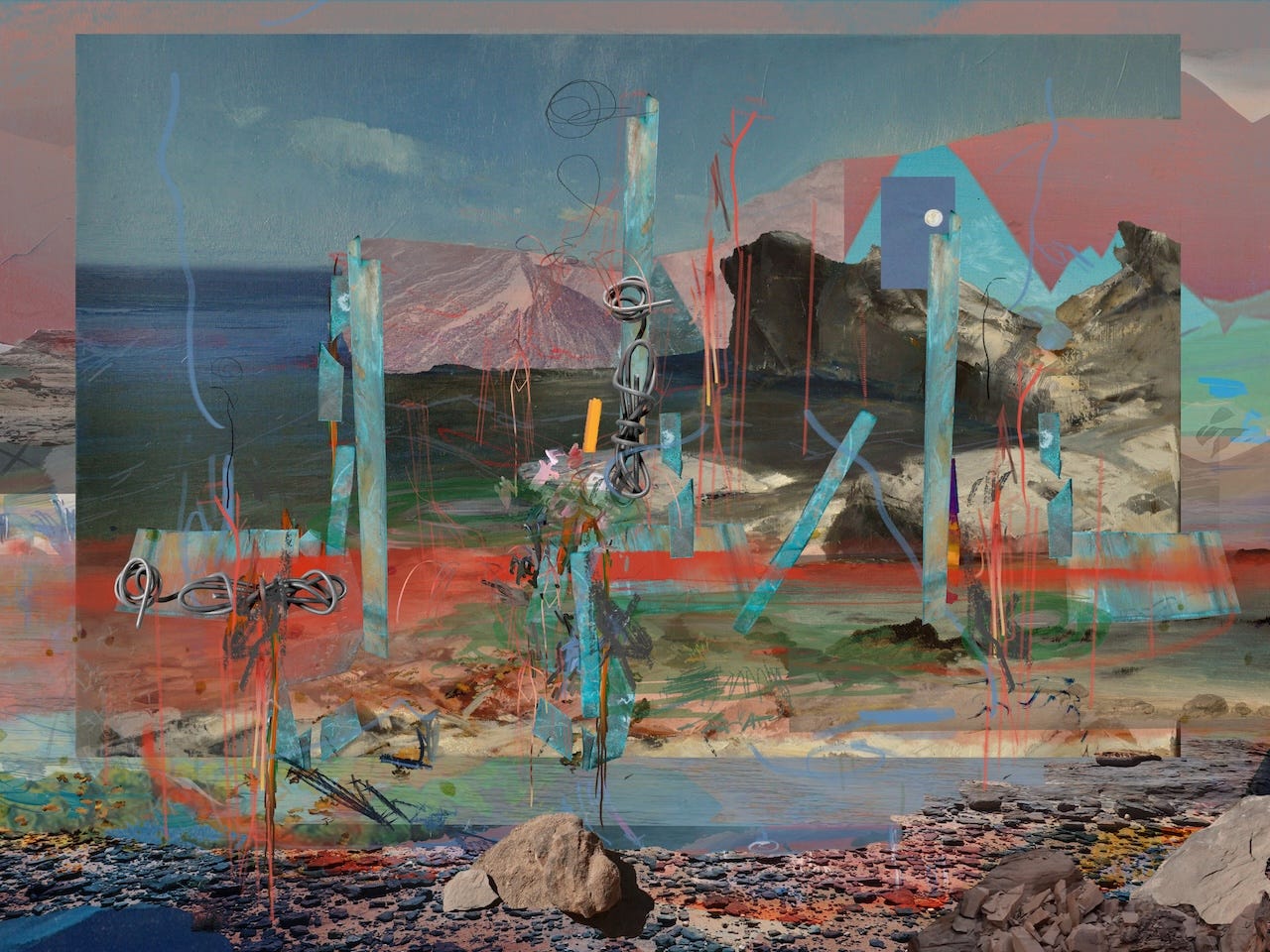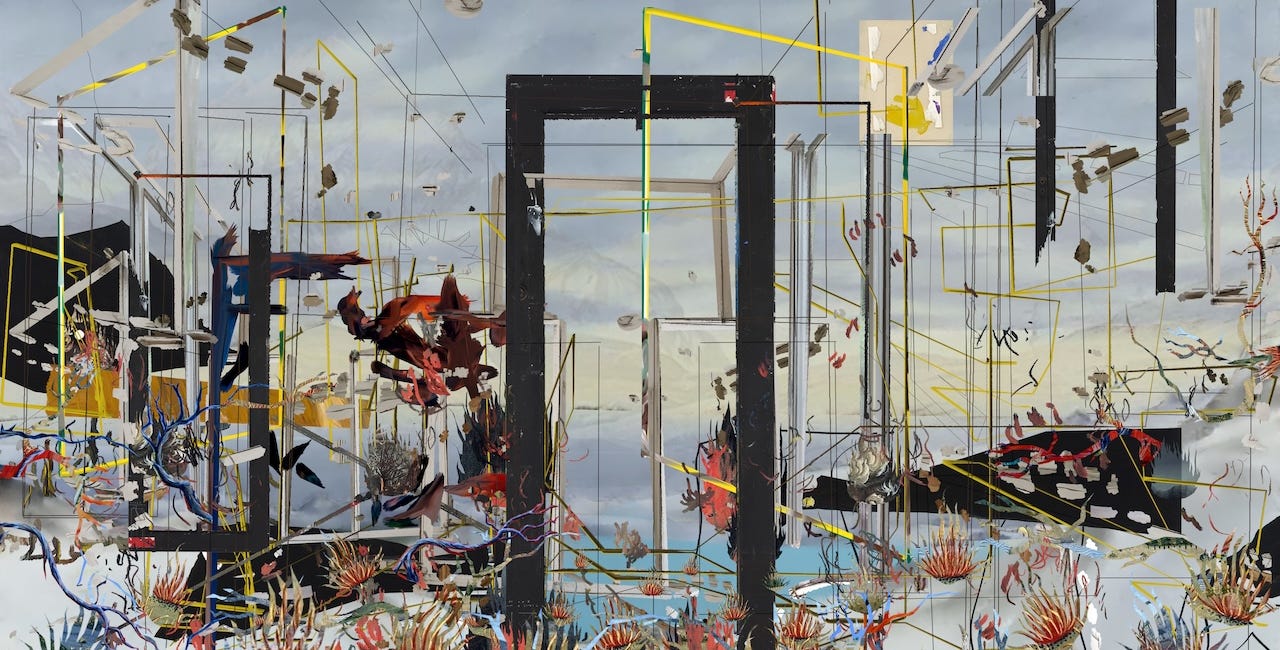Lives of the Artists: Petra Cortright (Part II)
Children give artists a primal human aggression
This is the second part of a conversation with the California-based artist Petra Cortright. In the first part, we talked about how parenthood affects the pace of production. Today, she shares more on how the studio fits together with home life, the distributed community of artists on the internet, and weighing up when and how to spend time away from her children. I was particularly taken with her comments on the personal give-and-take within a partnership of two artists. Finding the balance between intimacy and space is the key to any relationship, but when the creative process is at stake this tension is especially heightened.
When you look at your work over the last few years, can you look at something and tell that it’s something you made when you were pregnant, or when you weren’t sleeping well? Does it translate through like that?
It was really apparent with Otto, the before and after is such a hard, hard line, but with Jack, I was already in the mindset. I made a lot of work, and I was happy with it. When Otto was born I remember feeling so intensely that I was trying to make some new stuff from scratch, from a blank canvas rather than taking apart an older file, and I just couldn’t do it, and it was so scary and frustrating. Now I have insane thoughts, like maybe I could have a third just because. It’s just brain damage.
I’m obsessed with Jack. With Otto, I hadn’t been around babies. I had never changed a diaper before. I guess some people have more exposure to them. I didn’t have any friends who had them. It was a massive lifestyle change, obviously, and now I’ve become a baby person. With Otto, it was about a year later that I really felt happy with the work again, which is a long time. I started to take a little bit of pressure off myself and not necessarily try to make something new, but rework old files instead, which is a guiding, helpful thing for me. I am incapable of making the same thing over and over. I try to, but I can’t. There’s always progression in some way. There’s also little tricks to getting started. When I would work with the webcam videos, I would always tell myself, “Okay, this is just a test, just have fun.” This is not a piece of art with a capital A. It gets you into a better mindset, more carefree with nothing on the line. That’s always the best point to enter into the work. I slowly built my confidence up in that way. And then a year later I could make something completely new. But the second time around there hasn’t been that gap.

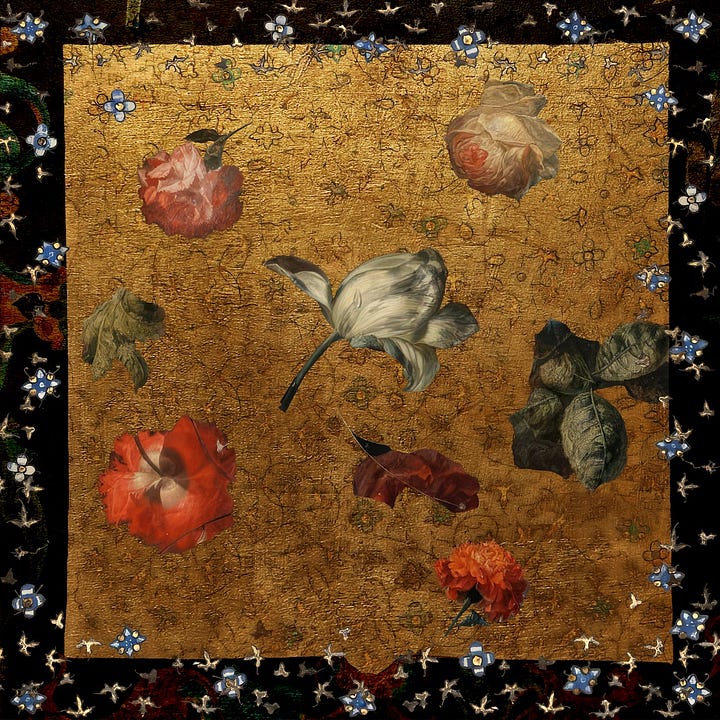
You mentioned that, at home, you have systems set up so you can parent and make art at the same time. What does that look like? What’s the system for you?
When there’s a baby in the mix, there’s a nursery, and that is two rooms away from my studio room, so if the baby is sleeping, I still be playing music in my studio and the sound is not a problem. Or I can have a meeting or move freely. It’s my own space, too, there’s no toys. It’s just a small home office. Otto, the five year old, his bedroom is in the room next to the home office studio, but he’s at school and doesn’t nap during the day so that room is empty. I don’t really work at night because I’m tired, but there is a door between the rooms so on the rare occasion that I want to work at night I could go in there and work.
Here, in Santa Barbara, the computers are right next to the bed, so I can’t work at night with Otto sleeping right next to me. Sometimes I have processes going at night, rendering a video or downloading or uploading files, because I have to send a lot of files to the printers for making the physical pieces. The paintings are bigger than they used to be. Each file can be, like, three gigs, so if you’re sending 20 or 30 paintings for a printing run, the uploading takes some time, and I used to do all that at night. And now the internet is very slow here, and I can’t do night things, because we wouldn’t be able to sleep with the screen on.
Then Marc has his separate studio. My mom moved in with us last year when Jack was born. She’s with him right now. That’s him screaming in the background, if you can hear. She helps me so much. We had a nanny when Otto was little, but it got really expensive when he was at preschool. Navigating school and childcare is really hard, and so much money, so we basically solved it by having my mom help. I love the idea of their grandmother being so close. Living with your parents, three generations in one household, it’s not for everyone, but for us right now this is the best way for our family to function.
You’re back in Santa Barbara. You were in San Barbara when you were a kid. What was life like there as a kid? Did you have any early exposure to art?
Both my parents were artists. My dad was the head of the art department at the University here, and my mom was his student. That’s how they met. There’s a 14 year age gap, which the younger generations look down on now, the power imbalance. Everyone in our family is an artist. Honestly, it’s too much. My sister, my husband, my mom, every single person. It sucks. We’re praying for a doctor or a lawyer. How do you even cultivate a doctor and a lawyer from this situation? Even the music that I listen to with Otto, I’m like, “Oh my God, what are you even exposing him to?” Maybe he’ll push back against it, rebel against us or something.
Santa Barbara is a ridiculously nice place for kids. It’s so small, it’s so easy, the weather is really nice. There’s a lot of resources for the size of the town. The summer camps are so much better than LA. It’s a very coddled, bubbly bubble place. We live five minutes from the beach. Otto walks to school. It’s a very sweet little elementary school. I pick him up and take him to the beach and sit there for two hours while he plays. You don’t have all the driving of LA, which I try to avoid. We’re on the outskirts, in the historical suburbs. And when it’s not on fire, it’s a very nice place to be. People always worry about their kids growing up in LA or New York City, that they’ll grow up too fast. Bunch of softies coming out of Santa Barbara, for sure. No edge here. I don’t know how I got my edge. I got it because I was on the internet when I was little. That’s how I got my edge.
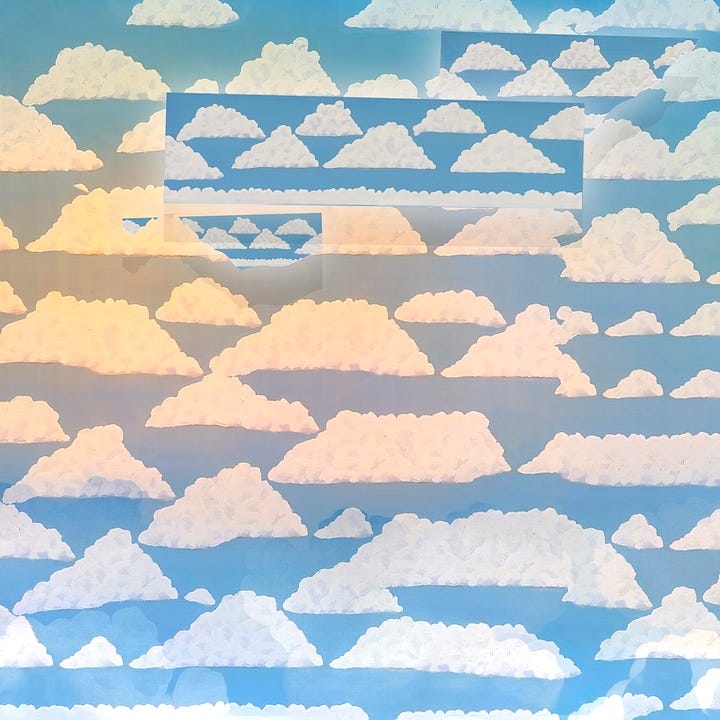

A lot of artists form their community through art school but then also through sharing studio space and things like that. But with the digital art community, you’re connected to people who are in different parts of the world. How is that social dimension transformed? Are there internet artist parent groups?
We keep in touch for sure. All the women artists I know who have kids, you sort of keep tabs on that. It’s a lot of Close Friends stuff on Instagram. You’ll see someone have a show, but then you’ll see on Close Friends that the kid is sick. Nothing official, there’s no actual group, because it’s also so incredibly specific to people’s careers and their setup, and what country they live in. For people in Europe the school thing isn’t as intense as the United States. There’s a little bit more of a safety net. Education is more accessible. They’re not paying private school tuition in Berlin, but they’re still learning about gnomes and baking the bread and feeding the chickens.
When I talk to other artists about it the thing that comes up the most is travel. The longest I’ve ever been gone was when I did a residency in Saudi Arabia three years ago, and that was a big, big thing for me to do. I had never been to the Middle East before. I ended up loving it and having the best time. Now I’m an ambassador for Saudi. I’m obsessed with it. Before I went it took some talking and planning with Marc. I had this window to go because we were planning on having another baby, so if I hadn’t gone then I wouldn’t have been able to go. You can’t really travel when you’re pregnant in the same way. There’s so many limitations. I was talking to another artist at the time who was considering it, but she was going to have to bring her son along. He was in that really hard early toddler time, crawling and baby walking, putting everything in the mouth. It’s not like the residency is child-proofed. The only way I could go was for my mom to stay at our house and help Marc.
California is so far away from everything. Everything is a 12-hour flight. Wow, 12 hours with no one bothering me for anything, this is such luxury. But then you get there and you’re already missing your children, and you think you’ll sleep so well alone, but then you don’t. It’s so weird not having kids and people around. Then God forbid something happens while you’re not there and you feel guilty for not being there. But with our work there’s such a demand for travel. Some artists are on planes all the time. There’s so many fairs, biennials, museums. I have to say no to a lot of travel, but it’s a really hard thing to balance, because when you say no and you’re not there, that’s felt, and it affects your career when you don’t show up. When you show up you talk to collectors and people and it’s nice to be connected and be a part of things. That’s a constant thing to negotiate, how much do I need to be out there to keep things going and not be away from my family all the time.
I also just don’t like traveling. I’m such an artist. I’m such a homebody, I truly love being at home and having my time on the computer to make work. That’s my happiest thing. The thing I’m always forcing myself to do is the more outward-facing stuff, going to openings. Some people are very social. I’m an internet artist. I prefer to be on the computer. I prefer to be social on the computer. I talk to artists all day on the computer. Then I wonder, do we even have to live in LA, or in a major city? Could we get away with moving to Montana? We have a place in Montana that we got four years ago with crypto and NFT money. I thought it was very poetic to convert crypto into land and water. This was a year after Covid, and there’s always so much climate anxiety in California, and it’s really oppressive. It’s five acres, which is a lot for many parts of the world, but not for Montana, but it has a well and water rights. It’s a little bit of a Doomer sort of thing. And also for children—at least we have water rights for the boys.
It’s not like LA is the center of the art world or anything, but it is a major city with a lot of museums. A lot of people come through. But then two hours north in Santa Barbara, there’s nothing going on here. You really are removed, so I’ve had to go down to LA for the fairs and other things. I’ve spent some years in the past not doing enough things, saying no to too many things.
Hi bugs. You can come in and tell me, just push the door. Let me help you. Hi, come here. What’s up? Do you want to say hi to Robin? And then I will help you. You can watch that, but not in here. Is that en Espanol? Que bueno. Hey, vamanos, you’re gonna take it downstairs into the other room. Okay? Careful going down the stairs, please.
As artists, the work is always there. With a lot of opportunities, if you don’t take a show, they’re going to give the show to someone else. You don’t necessarily get that show back. Now I don’t want to say no to anything anymore. I’m going to get it done one way or another. This year I’ve been working brutally hard. This is the amazing thing about having children, that it puts a drive into you that is unspeakably strong. Your reasons for doing things and for life are very different. It’s a primal human thing that you can’t even describe. There’s these forces at play that are bigger than you, and it makes you capable of doing things that you couldn’t have done before. It’s extremely positive, actually, but very intense and very aggressive.
A bad day with the kids can be worse than a regular bad day, and then when everything’s going well you feel like things have always been easy. You don’t remember how intense it can get.
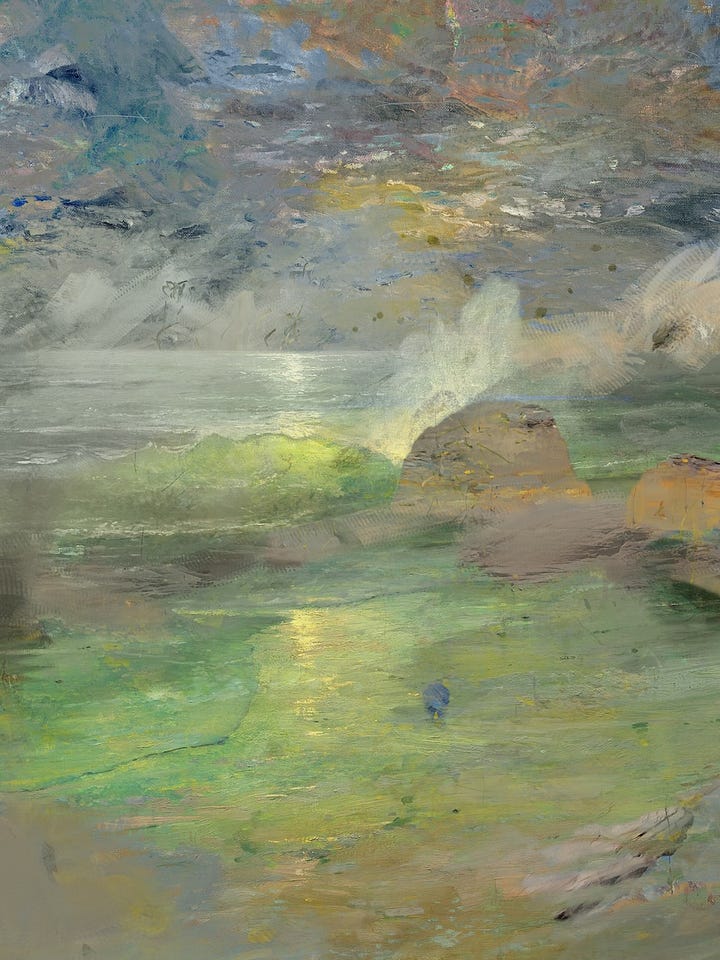
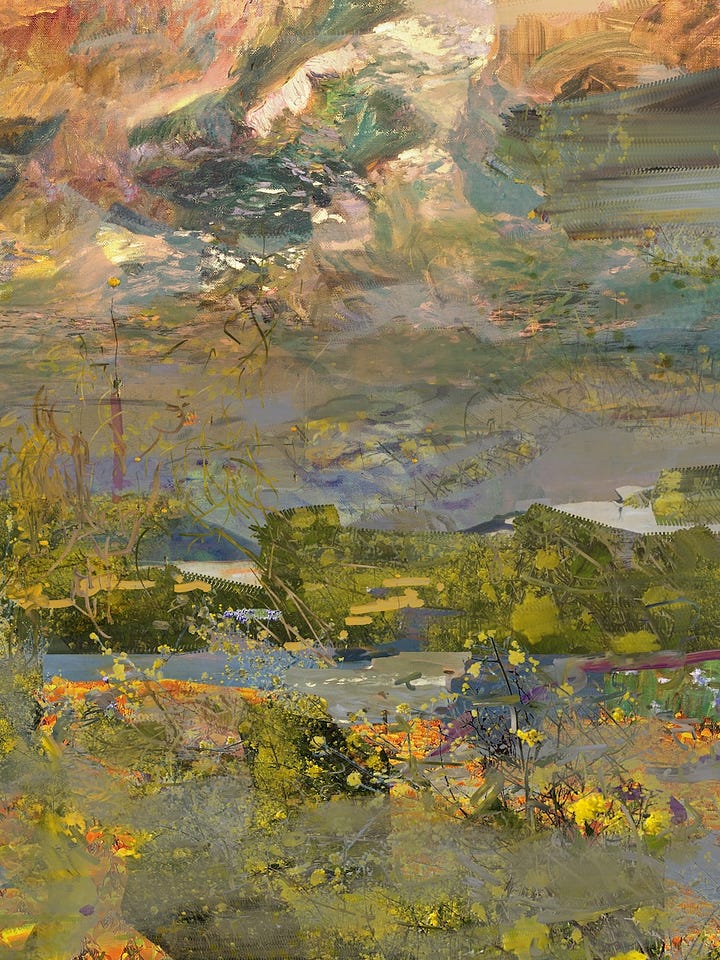
What are the shows you have coming up this fall?
I have a show at my gallery that I work with in LA, 1301PE, in September, and then I have a show in London at a new space called Interval by David Gryn, who used to run Daata. He’s opening this super interesting live-work house gallery space, very cool project he’s doing with his son, Jacob Gryn. Very family. I love that model, sort of an older idea of a gallery as a shop or an inn. And then in November, another show in London with Almine Rech. I’ve just started working with them and I’ve never met her in person, we’ve just spoken on the phone. It’s another kind of thing that I’m adding. I already work with seven galleries, and that would be the eighth.
My setup, my model is a bit different. I still work with the art dealer Stefan Simchowitz. I’ve worked with him for 12 years now. He’s chilled out in so many respects. He still funds the production of everything and then consigns work to the galleries. The easiest way to describe it is as a wholesale thing where he buys a batch of digital work, produces it physically, pays for the production and shipping, and then consigns to the galleries depending on their situation, and they work out their deal. But I’m always paid up front, which is a great system for me.
I try to be as transparent about it as possible, because people are so opaque about the ways in which they’re even able to be an artist. I also sell NFTs, maybe twice a week. I haven’t been doing them recently. I need to make more. Instead of putting all the eggs in one basket and trying to get to some mega blue chip gallery, I prefer to work with as many people as possible. There’s no reason why I should ever have to say no to having a show. Basically, I don’t care. I don’t care if it’s a 7-11. If someone wants to try to sell art, it’s not a problem. I don’t believe in these older models of exclusivity. I think they’re failing.
It ties into the whole children thing. Jon Rafman was super hesitant about doing NFTs, and I told him it’s just grocery money. He thought that was an interesting way to think about it. Grocery money for your family, or a down payment on a cabin in Montana if things come into alignment in the right way. You just have to play around with things and not overthink them. I don’t know how else to do it. Saying yes, forcing myself to show up and try different things.
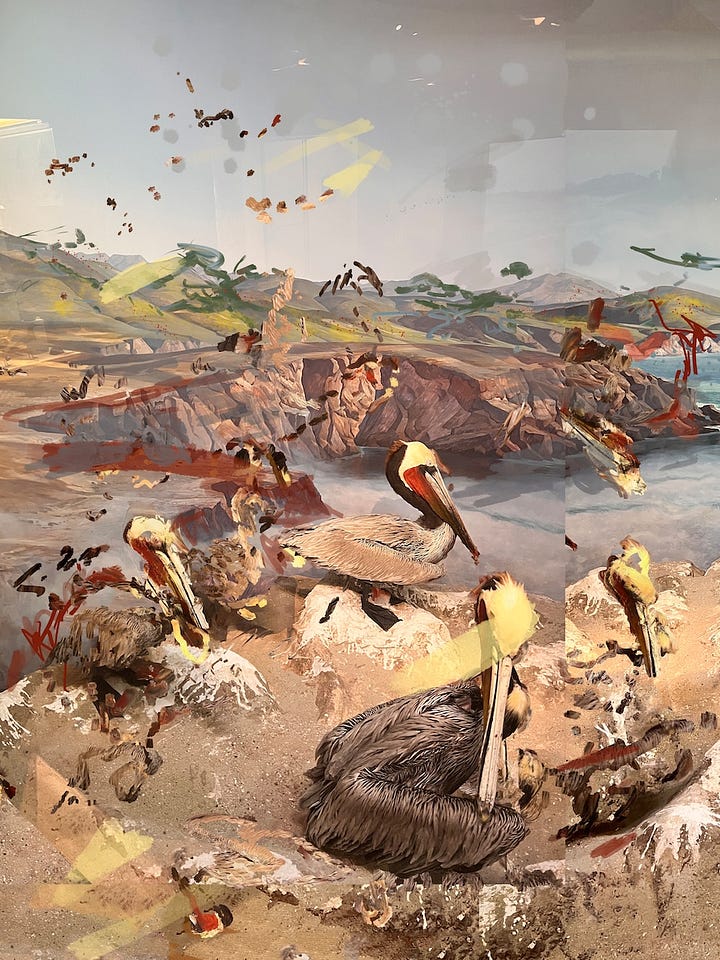
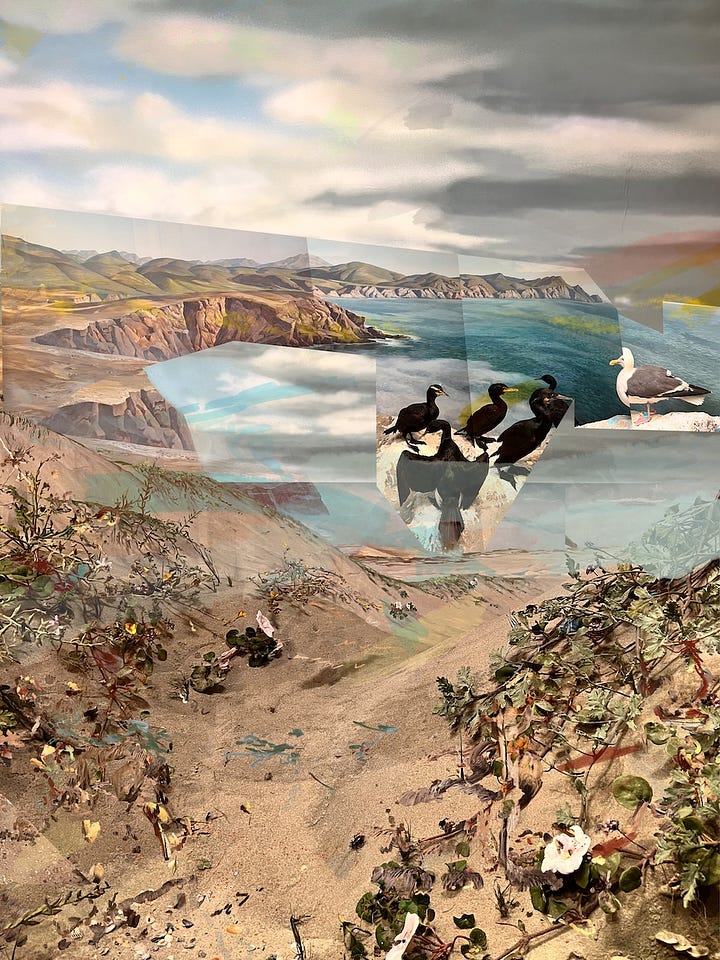
I want to ask about Marc and your relationship and how you balance everything. It’s two studio practices and sharing a family. Are you very intentional about the way that you make physical space for each other’s work, but also mental space?
It’s very difficult for me. We have really different personalities. Marc wants to bounce a lot of ideas around, and I want to be left alone. I don’t want to talk to anyone about anything ever, in terms of art. I just want to be in a room with a computer by myself. I’m always such a bitch to him, “I can’t talk about this right now. I don’t want to.” We literally barter. I’ll ask him to do something around the house and he’ll say, “You owe me one art question.” It’s crazy. I’m sure other people have a better way of dealing with it. I always encourage him to talk to anyone else that’s not me. Two artists is a lot, and it’s more than two artists in our family. You have to put on your own mask before helping someone else. You have to balance not being drained by giving too much of yourself to someone else. How much energy can I give to my children so that I still have enough in me to make my own work? How much energy can I give to Marc?
What do you do to replenish your energy?
Being by myself. It’s a classic introvert-extrovert thing. And exercise. I do believe that you have to expend energy to get back energy. Sitting around only begets tiredness. I was thriving during Covid when there was no demand for us to go out into the world. Having a routine was great. We would have a babysitter over for Otto and do personal training sessions outside in the backyard. But then as an artist I also naturally want to break out of routines. I have this contrarian bug worm in my brain that wants to do things differently or feel more alive or something. Routines are very good for children too. It makes them feel safe. Jack is still a baby so he’s still napping, and I know that I can make work during that time. I thought that I was going to be one of those whimsical California baby-wearing moms, but it was really getting on a schedule and a routine that made me feel like I could do it. There are people who travel with kids all the time. I can’t do that. I’ve never brought Otto along on my travel. I don’t know how people do it. I prefer for him to stay home and have a familiar setting and a routine, and for Marc and I to switch off and take turns. There will be a time and a place for traveling later down the road.
For Part I of my conversation with Petra, click here:
Lives of the Artists: Petra Cortright (Part I)
Petra Cortright is a pioneer of two distinct strands of contemporary art that have come to define the visual culture of the twenty-first century: the webcam video and the digital painting. Her 69-channel installation of webcam videos (sapphire cinnamon viper fairy


